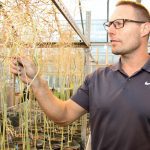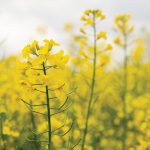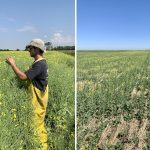
Oilseeds — page 2

Prepping for the 2024 canola crop
Planning for crop stresses now will set growers up for success when it is time to act: agronomists

Genome selection helps find next superstars
Sequencing the canola genome in 2014 paved the way for researchers to be more precise when developing new varieties

Biofuels drive canola demand
Canola Council of Canada aims for yield research to meet demand

Resistance not full answer to clubroot
Fall is the time to think ahead on clubroot management

The top canola diseases of 2023
Initial survey results were based on 100 fields this year

Raising the profile of verticillium stripe
Identifying the new-ish fungal threat on the block

Verticillium stripe symptoms
Is it verticillium stripe, blackleg or sclerotinia? Here are ways to find out

Survey to flesh out Canadian canola storage
The University of Manitoba hopes the survey will provide a full picture of on-farm realities

Palliser Triangle: It’s hot and dry — and the next frontier for canola
With crush capacity soaring, canola council looks to the brown soil zone and new heat-tolerant varieties

Canola groups among Canada’s busiest lobby groups
CCGA, CCC expanded efforts beyond usual government departments in 2022, leaders say






